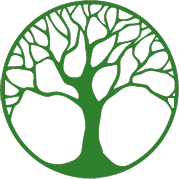Downton Abbey redux, The advantages of robot servants, Extinction, by Dave Barrows
- Log in to post comments
"Downton Abbey" is a British historical drama television series that aired from 2010 to 2015. The show is set in the fictional Yorkshire country estate of Downton Abbey and depicts the lives of the aristocratic Crawley family and their domestic servants in the early 20th century.
The series explores the intricate relationships, social hierarchies, and societal changes of the time, highlighting the contrast between the privileged lives of the Crawley's and the working-class struggles of their staff. It delves into various themes such as love, class, duty, inheritance, and the impact of historical events like World War I and the sinking of the Titanic.
The age of servants in the United Kingdom gradually declined over the course of the 20th century. The traditional system of domestic service, where households employed a significant number of live-in servants, began to diminish after World War I. The social and economic changes brought about by the war, including the increased demand for labor in other sectors, the rise of the middle class, and the decline of the aristocracy, contributed to the decline of domestic service.
The decline continued throughout the interwar period and into the post-World War II era. Changing societal norms, the introduction of labor laws, increased education opportunities for women, and the availability of alternative employment options all played a role in the diminishing demand for domestic servants. It is generally accepted that by the 1960s, the practice had significantly declined. Today, while domestic staff may still be employed in some affluent households, the traditional system of widespread live-in domestic service that characterized the earlier periods has largely faded away.
Aging populations and domestic service
The aging population in the developed world is a significant demographic trend that refers to the increasing proportion of older individuals in the population. This phenomenon is primarily driven by two factors: declining birth rates and increasing life expectancy:
Declining birth rates: Developed countries often experience lower birth rates due to factors such as increased access to contraception, a higher prevalence of women in the workforce, and cultural shifts towards smaller families. This leads to a reduced number of young people entering the population.
Increasing life expectancy: Advances in healthcare, improved living standards, and better access to medical services have resulted in increased life expectancy in developed countries. People are living longer due to reduced mortality rates from diseases and improved treatments for various health conditions.
The aging population has several implications for society, including:
Healthcare and social services: An aging population places a higher demand on healthcare systems, long-term care facilities, and social support services. There is a greater need for medical care, assistance with daily activities, and specialized care for age-related conditions such as dementia and chronic illnesses.
Social and cultural changes: The aging population can result in shifts in social dynamics and family structures. With fewer young people, there may be a greater reliance on support systems for the elderly, such as adult children or government programs. This can impact intergenerational relationships and caregiving responsibilities.
The UN predicts the rate of population ageing in the 21st century will exceed that of the previous century. The number of people aged 60 years and over has tripled since 1950 and reached 600 million in 2000 and surpassed 700 million in 2006. It is projected that the combined senior and geriatric population will reach 2.1 billion by 2050.
The demand for domestic services, kitchen staff, butler, personal secretary, and health care support will increase dramatically. In the absence of mass migration, the availability of workers for domestic services will be limited.
Robots
Whilst in its infancy, there are a number of examples of robots used in domestic service that have been developed and are being used or tested in various capacities. Here are a few notable examples:
Roomba: The Roomba is a popular autonomous vacuum cleaner developed by iRobot. It uses sensors to navigate through a home, avoiding obstacles, and automatically cleaning floors. It has become a widely adopted robot for domestic cleaning.
Pepper: Pepper is a humanoid robot developed by SoftBank Robotics. It is designed to interact with people and aid in various tasks. Pepper can recognize emotions, engage in conversation, provide information, and even perform simple tasks like serving as a receptionist or a companion.
Nannybot: Nannybot, developed by Panasonic, is a robot designed to assist in childcare tasks. It can monitor a child's activities, provide entertainment, and even play educational games. Nannybot aims to support parents in supervising and engaging with their children.
Laundroid: Laundroid, created by Seven Dreamers Laboratories, is a robot designed to fold clothes. Users can place a pile of clean laundry into the machine, and it uses computer vision and robotic arms to identify and fold each item properly.
Husqvarna Automower: The Husqvarna Automower is a robotic lawn mower that operates autonomously to maintain lawns. It navigates the lawn using boundary wires, detects obstacles, and continuously cuts the grass, returning to its charging station when necessary.
Aeolus Robot: The Aeolus Robot is a multifunctional robot. It is designed to perform various domestic tasks, such as picking up objects, cleaning surfaces, and even operating household appliances. The robot uses artificial intelligence and computer vision to navigate and interact with its surroundings.
Mab: Mab is a concept cleaning system developed by Electrolux. It consists of a fleet of small flying robots equipped with cleaning modules. These robots can autonomously navigate a home and clean various surface, reaching areas that may be difficult to access with traditional cleaning methods.
Extinction: To Be Continued
Tip of the hat to Chat
